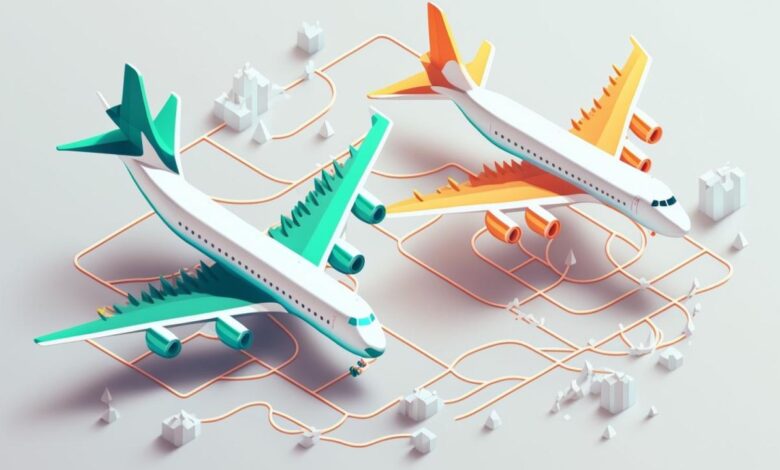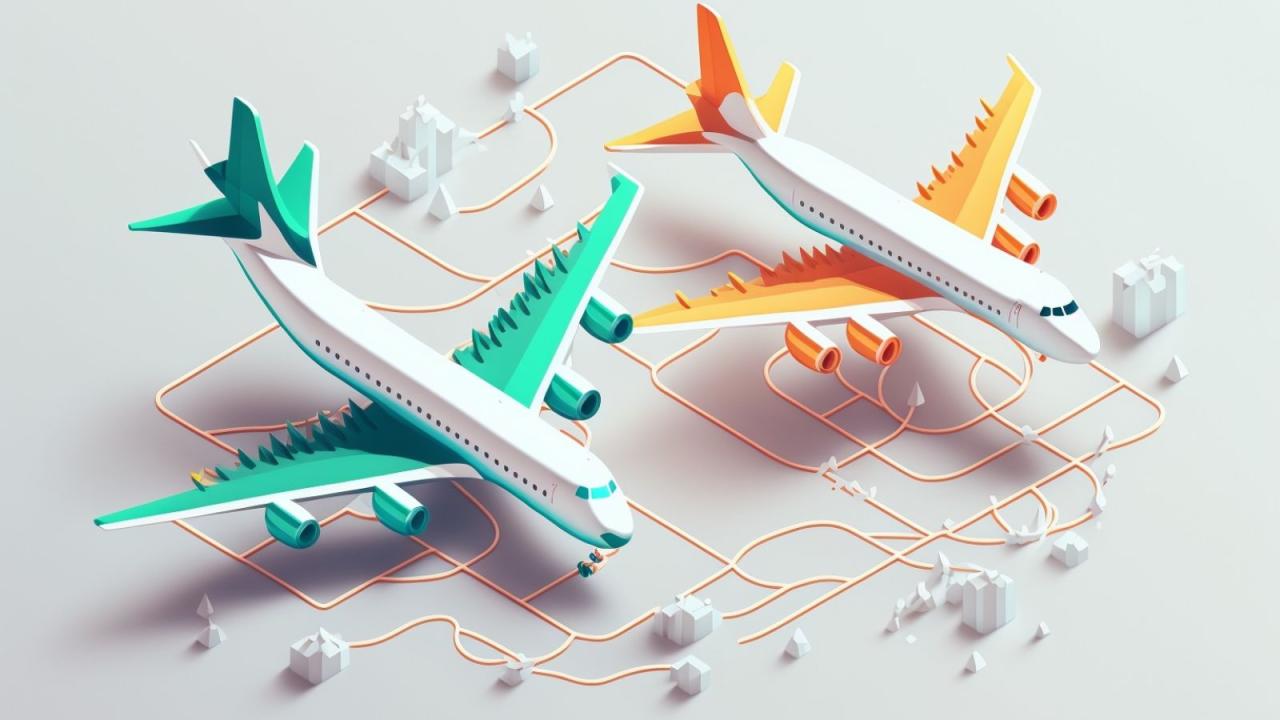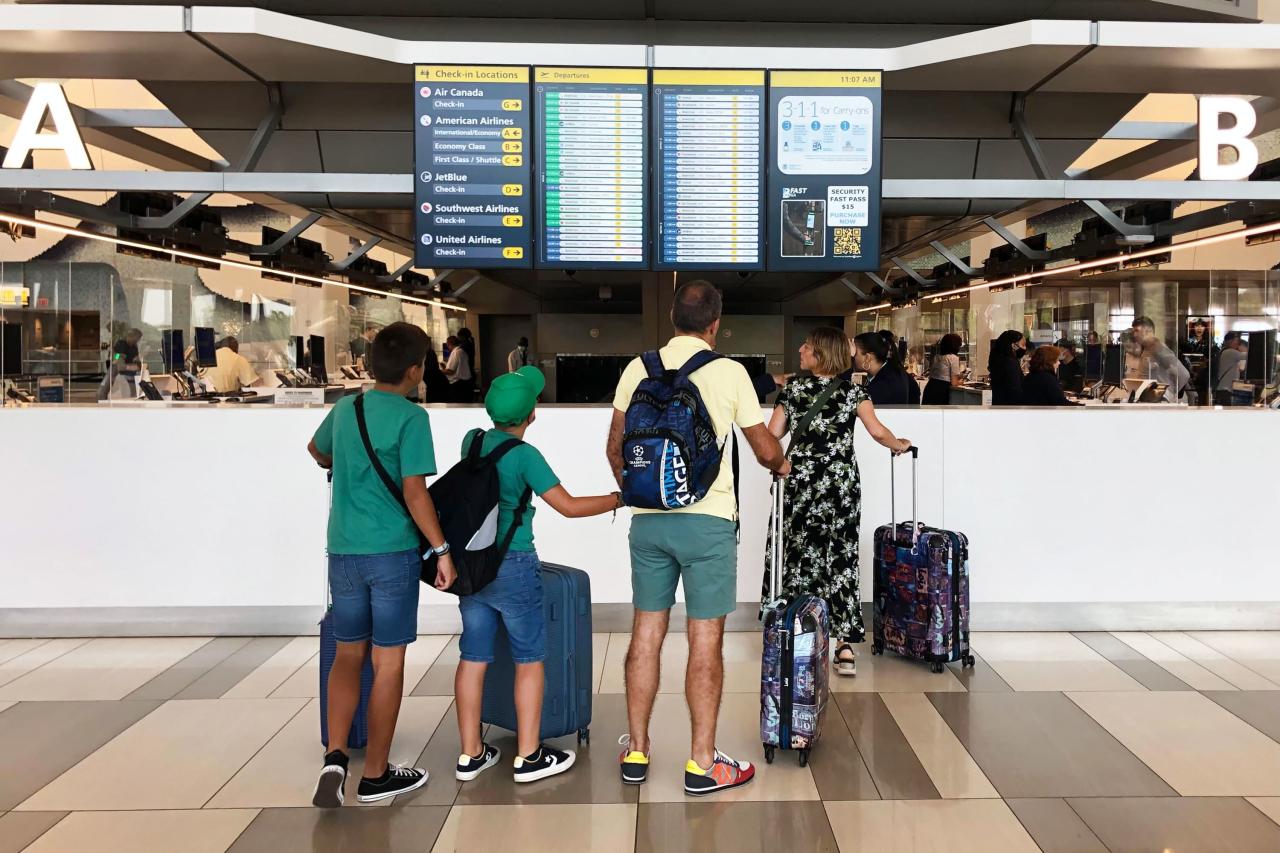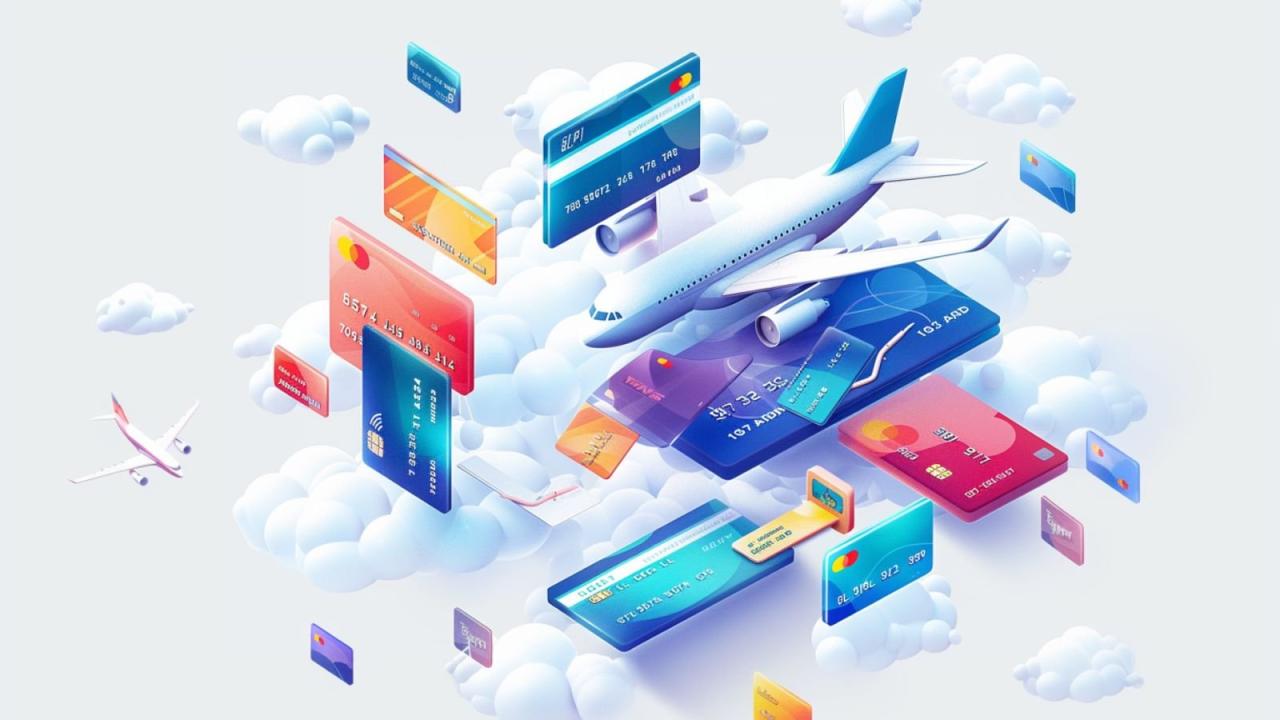
Introduction: The New Reality of Air Travel
Gone are the days of consistently stumbling upon shockingly cheap flight deals. In the contemporary travel landscape, both frequent flyers and occasional vacationers are confronting a stark new reality: a significant and sustained climb in air travel costs. What was once dismissed as a temporary post-pandemic surge has solidified into a persistent trend, reshaping budgets and travel plans worldwide. This isn’t a simple phenomenon with a single culprit. Instead, the current state of airfare is the result of a complex and interlocking web of economic pressures, industrial constraints, and strategic shifts within the aviation sector. This article delves deep into the multifaceted drivers behind this global price ascent, moving beyond the headlines to provide a thorough understanding of the forces at work. By examining everything from volatile fuel markets and labor shortages to evolving airline business models and environmental regulations, we will unpack why your ticket costs more and what the future may hold for the cost of crossing the skies.
A. The Jet Fuel Fire: Igniting the Core Cost of Flight
At the very heart of aviation economics lies jet fuel, the lifeblood of every aircraft. It is, historically, the single largest operational expense for any airline, often accounting for 20-30% of total costs. Therefore, its price volatility directly and immediately impacts the price of a ticket.
A.1. Global Crude Oil Market Turbulence
The price of jet fuel is intrinsically linked to the global crude oil market. Recent years have been a rollercoaster for oil prices, driven by a confluence of factors:
-
Geopolitical Instability: Conflicts in key oil-producing regions, such as the war in Ukraine, have disrupted supply chains and created massive uncertainty in the market. Sanctions and shifting trade alliances have forced a realignment of global oil flows, often adding logistical costs and premiums.
-
OPEC+ Production Decisions: The consortium of OPEC and allied oil-producing nations periodically adjusts its production quotas to manage global supply. Decisions to cut production to prop up prices have a direct and inflationary effect on jet fuel costs.
-
Post-Pandemic Demand Shock: As global economies roared back to life after COVID-19 lockdowns, demand for oil and its derivatives, including jet fuel, surged. The refining industry, which had scaled back operations during the pandemic, struggled to ramp up capacity quickly enough to meet this resurgent demand, creating a supply-demand imbalance.
A.2. The Crack Spread Squeeze
Beyond the price of crude oil itself, the “crack spread”—the difference between the price of crude oil and the petroleum products refined from it—has widened significantly. Refineries are operating at near capacity, and with strong demand for all distillates (including diesel and gasoline), the refining margin for jet fuel has expanded, adding another layer of cost that airlines must absorb and pass on to consumers.
B. The Supply Chain Tangled Web: From Spare Parts to New Planes
The aviation industry is a masterpiece of global logistics, but its intricate supply chain has been thrown into disarray, causing delays and skyrocketing costs for maintenance and fleet expansion.
B.1. Aircraft Manufacturing Bottlenecks
The two major aircraft manufacturers, Boeing and Airbus, are facing significant production challenges. Issues ranging from ongoing safety investigations and regulatory scrutiny to shortages of critical components like semiconductors and advanced alloys have slowed the delivery of new, more fuel-efficient aircraft. Airlines counting on these new planes to modernize their fleets and reduce operating costs are left waiting, forcing them to continue operating older, less efficient planes that guzzle more fuel and require more maintenance.
B.2. The Spare Parts Crisis
Maintaining an airworthy fleet requires a constant flow of spare parts. The global semiconductor shortage, which has affected everything from cars to smartphones, has hit aviation hard. Modern aircraft are flying computers, reliant on sophisticated avionics and systems that require these chips. Furthermore, logistical snarls in shipping and port congestion have led to extended lead times for even simple components, grounding aircraft for longer periods. An aircraft that isn’t flying is a massive financial drain, and these costs are factored into the price of tickets for the planes that are in the air.
B.3. Labor Shortages in Aerospace
From skilled machinists at manufacturing plants to certified aviation mechanics, the industry is facing a severe labor shortage. The pandemic led to early retirements and a layoff of a significant portion of the specialized workforce. Recruiting and training new talent is a slow and expensive process, further constraining the ability of the supply chain to recover its pre-pandemic efficiency.
C. The Human Factor: Labor Strife and Wage Pressures
After years of concessions and the traumatic furloughs of the pandemic, airline employees—from pilots and flight attendants to gate agents and baggage handlers—are demanding higher wages and better working conditions.
C.1. The Pilot Shortage Crisis
This is perhaps the most critical labor issue. A perfect storm is brewing in the cockpit:
-
Mandatory Retirements: A large wave of pilots is reaching the mandatory retirement age of 65.
-
High Barrier to Entry: The path to becoming an airline pilot is long and prohibitively expensive, often requiring upwards of $100,000 in training before earning a stable income.
-
Training Backlogs: The pandemic created a backlog in training and certification for new pilots. Airlines are now in a fierce bidding war for a limited pool of qualified captains and first officers, offering signing bonuses and substantial salary increases. These new labor contracts represent a massive and lasting increase in airline operating costs.
C.2. Union Negotiations and Industry-Wide Strikes
Across the globe, airline staff, empowered by tight labor markets and public sympathy, are unionizing and negotiating more aggressively. Threat of strikes and actual industrial action (as seen with air traffic controllers in Europe and ground staff in various countries) disrupts operations and gives labor more leverage in negotiations for higher pay. These increased labor costs are not absorbed by the airlines; they are inevitably passed through to the consumer in the form of higher fares.
D. Reinflating Demand: The Post-Pandemic Travel Tsunami
The psychological and practical release from COVID-19 restrictions unleashed a historic pent-up demand for travel.
D.1. The “Revenge Travel” Phenomenon
Coined “revenge travel,” this trend describes the overwhelming urge of consumers to make up for lost time and experiences. People prioritized spending their accumulated savings on travel over other discretionary purchases. This surge in demand, particularly for leisure destinations, allowed airlines to fill planes easily, reducing their need to offer discount fares to attract passengers.
D.2. The Resurgence of Business and International Travel
While slower to recover than leisure travel, the return of corporate travel and the full reopening of international borders (especially in key markets like Asia-Pacific) added massive fuel to the demand fire. Business-class tickets and long-haul international flights are high-revenue products for airlines, and the return of this traffic has solidified their pricing power.
E. Strategic Shifts: How Airlines Are Capitalizing on the New Normal
Airlines are not merely passive victims of market forces; they have actively adapted their business models and strategies in ways that also contribute to higher average fares.
E.1. Capacity Discipline and Controlled Growth
Burned by the overcapacity and price wars of the past, airlines have learned the value of “capacity discipline.” They are intentionally keeping the supply of available seats slightly below the roaring demand. By carefully managing flight schedules and being slow to add new routes, they create a supply-constrained environment where basic economics takes over: lower supply + high demand = higher prices.
E.2. The “Unbundling” Revolution and Ancillary Revenue
The model of offering a bare-bones basic economy fare has become a cornerstone of airline revenue strategy. These fares get passengers in the door, but airlines then profit handsomely from ancillary fees for everything else:
-
Seat Selection (especially exit rows and extra-legroom seats)
-
Checked Baggage (often the first and second bag)
-
Carry-on Luggage (on some ultra-low-cost carriers)
-
Priority Boarding
-
In-flight Wi-Fi, Food, and Beverages
While the base fare might sometimes appear low, the total cost of travel, once all necessary add-ons are included, has risen dramatically. This “unbundling” allows airlines to advertise deceptively low fares while significantly boosting their overall revenue per passenger.
E.3. Route Optimization and the Abandonment of Unprofitable Cities
Airlines have become ruthlessly efficient in focusing their resources on the most profitable routes. This has led to a reduction or complete withdrawal of service from smaller regional airports, concentrating capacity on major hubs. For travelers in smaller cities, this means fewer choices and often the necessity of purchasing more expensive tickets from dominant carriers at nearby major airports.
F. The Green Premium: The Cost of a Sustainable Future
The global push for decarbonization is no longer a future concern; it is a present cost for the aviation industry.
F.1. Carbon Pricing and Emissions Trading Schemes
Many countries and regions, most notably the European Union with its Emissions Trading Scheme (ETS), now require airlines to pay for their carbon emissions. This adds a direct cost to operating flights, particularly long-haul ones, which is often reflected in ticket prices through surcharges or baked into the overall fare.
F.2. Investment in Sustainable Aviation Fuel (SAF)
Sustainable Aviation Fuel, made from renewable sources, is the industry’s most promising path to reducing its carbon footprint. However, SAF is currently significantly more expensive than conventional jet fuel—anywhere from two to five times the cost. Airlines are making massive investments in SAF and are beginning to incorporate these costs into their pricing. Some carriers now offer passengers the option to pay extra to “green” their flight, but in the long run, the widespread adoption of SAF will necessitate a structural increase in the cost of air travel.
F.3. Fleet Modernization for Efficiency
While new aircraft are more efficient, they come with a multi-billion dollar price tag. The capital expenditure required to modernize a fleet is enormous, and the financing costs or lease rates for these new-generation aircraft (like the Airbus A350 or Boeing 787) are high. This debt burden is another factor that influences long-term pricing strategies.
G. Navigating the High-Cost Skies: A Strategic Guide for Travelers
In an era of elevated airfares, savvy strategies are essential for finding value.
G.1. Embrace Flexibility and Plan Ahead
The two most powerful tools in a traveler’s arsenal are flexibility and advanced planning. Being flexible with your travel dates by just a day or two, or considering alternative airports, can lead to significant savings. Booking flights well in advance (typically 2-4 months for international travel, 1-2 months for domestic) secures better prices before inventory sells out and last-minute premiums kick in.
G.2. Leverage Loyalty and Credit Card Rewards
Frequent flyer programs and travel rewards credit cards have become more valuable than ever. Earning miles or points through everyday spending and strategically redeeming them for premium flights can be an excellent way to offset high cash fares. Pay attention to transferable points currencies that offer flexibility across multiple airline partners.
G.3. Understand the True Cost of “Basic Economy”
Always read the fine print. A basic economy fare might seem like a bargain, but if you need to bring a carry-on bag and select a seat, the total cost could exceed a standard economy ticket that includes those amenities. Calculate the all-in price before committing.
G.4. Utilize Flight Comparison Tools and Set Alerts
Use powerful meta-search engines and flight comparison websites to scan a wide range of options and airlines. Set up price alerts for your desired routes to monitor fluctuations and book when a dip occurs.
Conclusion: The Permanent Ascent of Air Travel Costs
The confluence of factors driving up airfare—from the foundational pressures of fuel and labor to the strategic choices of airlines and the costs of a green transition—paints a clear picture: the era of consistently cheap air travel is likely over. While fares will always fluctuate with seasonality and competition, the structural cost base of operating an airline has risen permanently. The industry is evolving into a market where efficiency, sustainability, and premium experiences are prioritized over sheer volume and rock-bottom pricing. For the modern traveler, this new reality demands a shift in mindset: from hunting for mythical bargain fares to adopting a more strategic, value-focused approach to exploring our world. The skies remain open, but the price of admission has been recalibrated for a new age.
Tags: rising airfare, airline costs, jet fuel prices, pilot shortage, sustainable aviation fuel, travel tips 2024, airline industry, flight prices, revenge travel, air travel demand, SEO travel, Google AdSense







